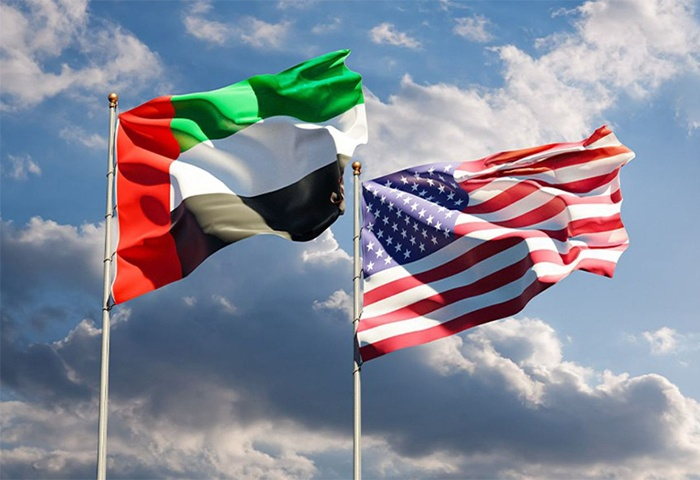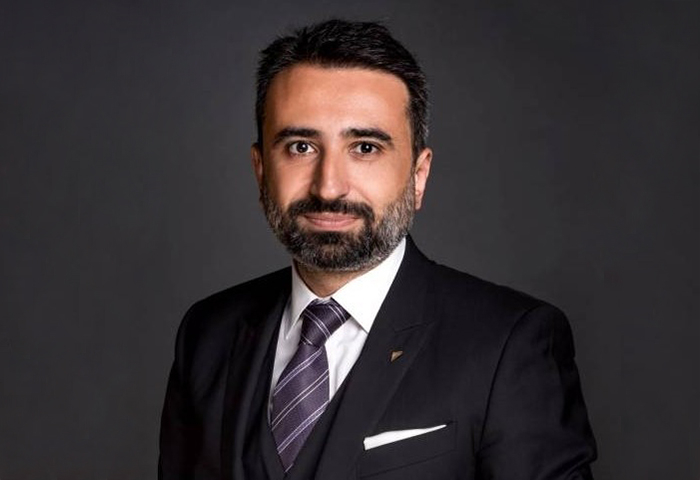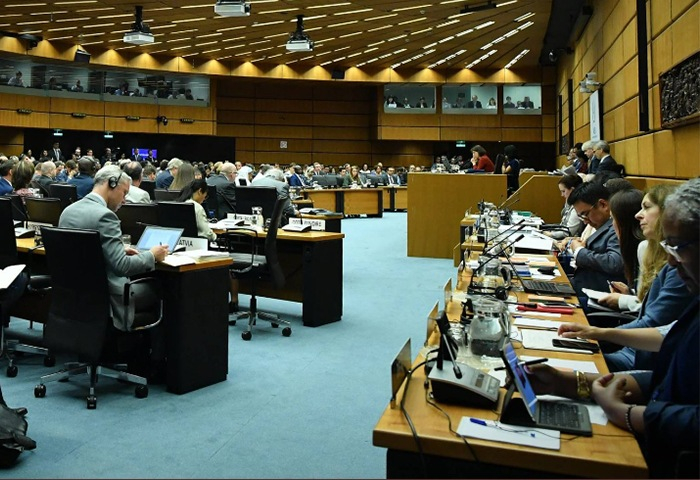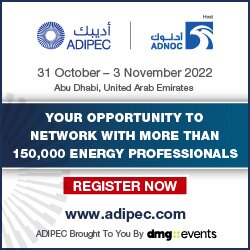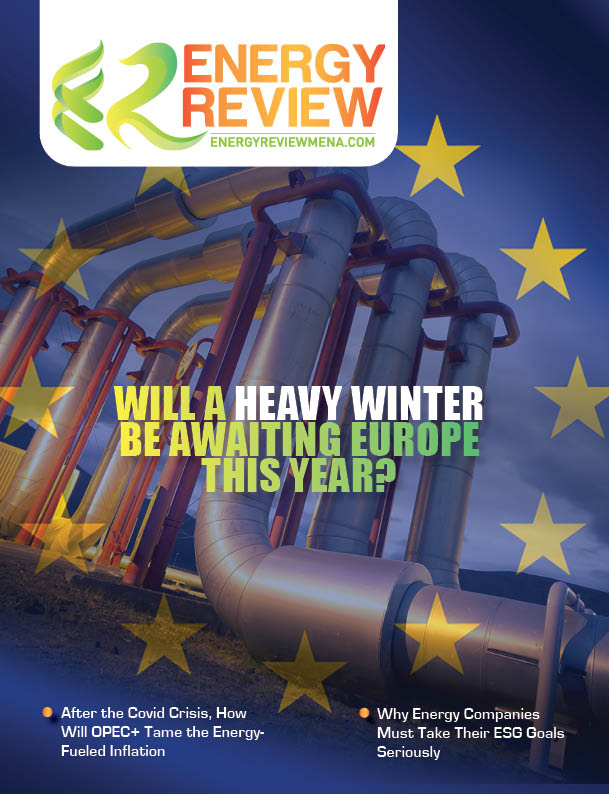Energy Review MENA was invited to the launch of the International Methane Emissions Observatory (IMEO) 2022 Report issued by the United Nations Environment Programme (UNEP) at ADIPEC 2022.
On the sidelines of this notable occasion, UNEP’s Oil & Gas Methane Partnership 2.0 (OGMP 2.0) Program Manager Giulia Ferrini sat down with us for an exclusive interview to shed light on their initiative and how Middle East players contribute to it, as well as the importance of mitigating methane emissions and the key role of the oil and gas (O&G) sector in the methane emissions reduction journey.
Can you give us, in brief, the motivation and goal behind the OGMP 2.0 initiative and how you influence the O&G industry?
The primary goal of OGMP 2.0 is to foster a better understanding of the largest sources of methane emissions amongst companies that can act to reduce those emissions. We do this collaboratively by building and then administering the world's most comprehensive measurement-based reporting framework. The data quality and experience across the industry is diverse as companies are at different stages of their methane journey.
This is the reason why it is critical to offer them a platform to learn from one another. The “P,” which stands for "Partnership," is perhaps the most important in OGMP 2.0 because it is the partnership that facilitates knowledge transfer across the entire oil and gas value chain and across the world.
I always insist on this “P” because we are not only a reporting framework, we are also a partnership. We learn from one another, and we discuss and write the guidance that companies need to meet the OGMP 2.0 reporting requirements. At the end of the day, the idea is not to point the finger at the companies that are doing less of a good job. Instead, we want to bring them together and make sure that, collectively, the industry makes a difference to reduce methane emissions.
The data provided by OGMP 2.0 companies is compared by the International Methane Emissions Observatory with other sources of data on methane emissions. Indeed, there is not any data in the puzzle that can provide us with a complete understanding of methane emissions alone. We need companies’ reporting, satellites, scientific studies and national inventories to make sense of all this data, aggregate it and put it in the hands of those who can act on it. The data is a means to the end, which is mitigation, mitigation and mitigation.
Why do methane emissions matter and how can technology help in the mitigation process?
Methane is a short-lived climate pollutant and, at the same time, a very powerful greenhouse gas. CO2, which lingers in the atmosphere for over 100 years, will determine how much the planet warms. Methane, which lasts for about 10 years, will determine how fast this will happen. If we cut methane emissions today, we can see the effects already over the next decade.
For the technology part, we need to bear in mind that methane emissions follow the 80/20 rule. In other words, the majority of emissions (80%) come from about 20% of the sources. Finding those facilities and sources has been challenging. New technologies can help us unlock the ability to quickly find and mitigate large sources of methane emissions. In a nutshell, if you don't know where methane comes from, how can you possibly fix it? Accounting methods for methane emissions are flawed because they rely on what we call “generic emissions factors”, on estimates. In reality, you will have more accurate idea of when methane emissions occur when you go out and measure them.
At the United Nations Environment Programme (UNEP), we don't recommend specific technologies that our OGMP 2.0 member companies need to deploy to identify, quantify and mitigate methane emissions as technology evolves rapidly. Hence, if we put out a list of recommended technologies today, it will be outdated tomorrow. In addition, there is not one existing technology that is one-size-fits-all. It depends on the company's specificities and what they are trying to achieve. Often, companies combine different technologies to measure methane emissions. They also need to better understand their methane emissions profile to make the right technological choices.
As launched during ADIPEC 2022, what are your insights on the key takeaways from UNEP's IMEO 2022 report?
We are proud that the OGMP 2.0 membership has expanded to 87 companies, as of today. The vast majority of them are on the way towards the Gold Standard reporting status. This means that they have started to integrate measurement-based accounting practices.
What we also found is that the majority of methane emissions comes from a minority of sources. The upstream segment is the largest contributor to methane emissions. Production is responsible for 77% of methane emissions, even though methane is being emitted along all segments of the value chain – distribution and transmission.
Another key takeaway is that we, together with the Environmental Defense Fund, developed publicly available technical guidance documents in which companies already part of OGMP 2.0 and others have a good starting point for quantification methodologies.
Besides, collectively, our OGMP 2.0 member companies reported 1.3 million tons of methane emissions. This number is very small compared to the global estimates, which amount to 80 to 140 million tons. Why is this? First, we do not have global coverage yet, we need more companies to join the Partnership. That being said, our OGMP 2.0 member companies still have time to reach the highest reporting levels, and I am confident that as they do more measurements of methane emissions, they will pinpoint more sources of emissions. Today, companies are not yet reporting data from their non-operated joint ventures – this refers to companies where they have an equity share. OGMP 2.0 requires member companies to monitor and report those as well. As more companies join our initiative, assets and measurements, then the gap between what our companies report and the global estimates attributed to the sector will narrow.
In your opinion, what should the O&G sector continue doing to achieve a significant reduction in methane emissions for the upcoming years?
I think the oil and gas industry should do three things to achieve significant reductions in methane emissions. First, the sector should work together to demand a high level of quality data, emissions transparency and accountability from business partners and peers. They say that methane is the Achilles heel of the industry, so it is decision-makers' responsibility to bring the laggards along on the methane journey. Eventually, what is at stake is the O&G industry’s collective reputation, which could affect their license to operate. We will only succeed when all companies will have joined us.
Second, the sector should take action to reduce methane emissions once it has identified the source. This means eliminating venting, ensuring that flares are properly lit and continuing the monitoring for emissions. The data is clear that venting is one of the major sources of emissions. With this data, they can start acting accordingly.
Third, the sector should integrate emissions management as a core business tenet. This was the case for safety reasons, and now we need to do it for environmental reasons. The industry is full of talented engineers who have such expertise. They design, build and operate these complex facilities, equipping them with the tools needed to identify and reduce methane emissions.
Can you share the core contributions of the Middle East-based OGMP company members? What is your outlook for this region?
Among our OGMP 2.0 member companies, we have ADNOC, QatarEnergy and Petroleum Development Oman. All three companies have started to incorporate higher-quality data in their inventories.
ADNOC was reporting for the first time this year, and they submitted a very solid plan that gives us confidence that they can reach the highest levels of reporting within the set timeline. As for QatarEnergy, they were reporting for the second time and have also achieved the Gold Standard reporting status. Petroleum Development Oman is a very interesting case because they are relatively new to the methane journey. They are reporting for the first time this year and are taking advantage of the different service providers out there that can help companies meet the OGMP 2.0 requirements.
These companies are not only showing themselves as responsible regional players, but they also have an opportunity to become global players since they have assets in companies outside the Middle East. Unfortunately, we are still missing some key players in the region. It is my hope to have Saudi Aramco join the partnership, just to name one.
All eyes of the world are on this region, especially with the UAE hosting the international climate conference COP28 next year. This is a tremendous opportunity for the [O&G] sector as well as for this region to demonstrate leadership in tackling climate change using one of the most effective tools in our hands: slashing methane emissions.


